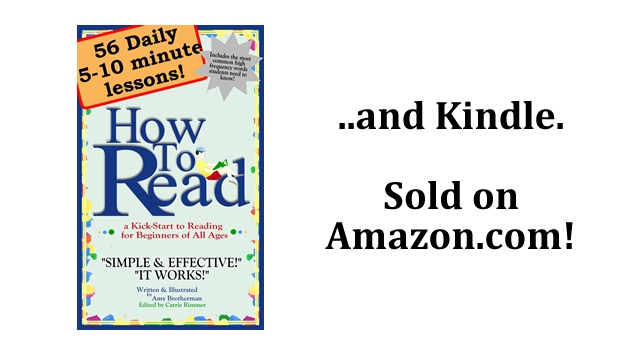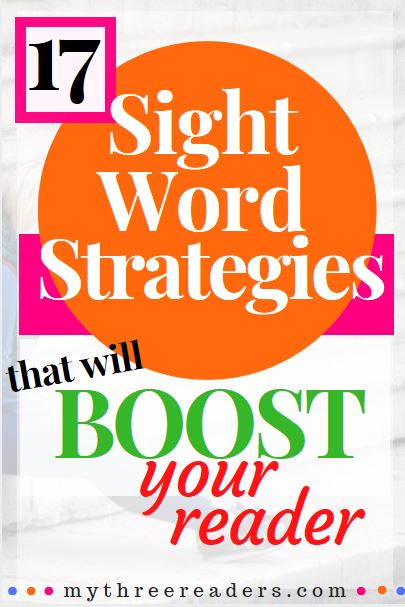How to teach reading to a child or beginning reader..
Knowing how to teach reading skills to a beginning student seems like it should be simple, right?
Sometimes, though, when you sit down to do it for the first time or with a new child, the struggle can be real. Knowing where to start and having a few tools in your pocket can make a world of difference. Never fear though! The learning curve is small when it comes to knowing how to teach reading and you can do it well. Keeping a list of reading strategies for referral as you teach can be a great way to effectively teach reading. Take these 5 points into consideration when you are just beginning to learn how to teach reading to a beginner:
-
Sight Words - Know how to teach reading strategies for elementary sight words
-
Phonics - Have a grasp of basic Phonics rules and strategies for reading unknown words.
-
Comprehension - Find out the best way to teach reading in Kindergarten or any age for comprehension.
-
Fluency - Understand what fluency is, and what are reading strategies you can implement to encourage a fluent reader.
-
Watch for Struggling Readers - Know a few things about what can cause students to have reading trouble, how to spot it in your reader, and how to teach reading skills to a struggling reader.
In addition to the 5 points above, I wrote a book that mainly focuses on a simple sight word strategy to teach reading that I'd like to introduce you to.
How to Read: a Kick-Start for Beginners of Any Age is the book I wrote to give a start to beginners who are eager to begin learning and for parents at home who need a tool to know how to teach reading to their kids. Some kids need a big bang to start off with. (Note: The book also gives instruction to anyone wanting to know how to teach reading to adults!)
Some kiddos are so eager to begin reading with How to Read, they may want to jump ahead in the lessons. I usually recommend for you to go as slow as possible to really ingrain the words. However, for some starters, it might be okay to do two or three lessons a day. When I started this with my own children, we spent two or three days just on the first lesson. So - go at your own child's rate of readiness and eagerness. Another one of my children started the book, but was just not ready. So we put the book away and waited a few months before picking it back up.
THIS BOOK WORKS. The reason I wrote it in the first place was to replicate the pattern my parents used to teach me and my sister when we were young. There is nothing like this system and yet it's so very simple!
There are many sight and high frequency words included in the lessons but there is a GREAT DIFFERENCE to this book than in just memorizing straight sight words. And that is - the words are almost immediately (day by day) brought into short easy sentences so that your child is READING in context on day two. YES! DAY TWO!!
As each day goes by, a few new words are introduced and the new words are incorporated into sentences. Words are repeated over and over in sentence context so that your child is practicing the word, yet in sentences. By the end of all the lessons, 125 words are learned with the flow and feel of sentence structure.
Here is an example of the book's instruction technique:
On Lesson One of How to Read, your child will learn 3 simple words: GLAD, MAD, and SAD. You will read this to your child and then have him repeat, several times.
On Lesson Two, your child will learn two more words: I AM. He'll hear them from you, and then practice the page with the new words in sentence form. HE'S READING!! Yes, in only TWO DAYS your child is reading sentences. Cool, right? The thing is, this immediate success will make your child feel so successful.
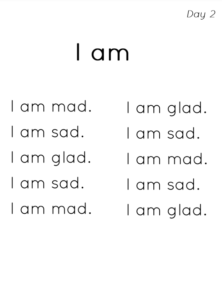
On Lesson Three, she'll learn a few more words: CAT, MAT, and RAT. And you guessed it, on Lesson Four, these words are brought into short sentences:

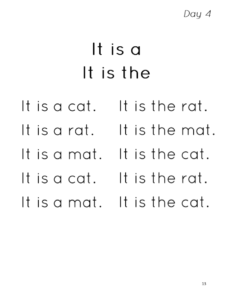
After a few more words learned, your child puts them all together. So for instance, on Lesson Six, several words and sentences are put together, but all words that have been previously introduced.

WOW!! Six days in and this is what your boy or girl can read. I realize this may seem crazy, but really - it can work for your child! And the success he or she will feel as they read will really boost their confidence.
As I mentioned before, this is a great kick-off for the eager reader. It can even work for the struggling reader - sometimes we slow down the teaching process of reading waaaaay too much. Our children's brains are like sponges. Teaching them one or two new words to memorize on a weekly basis with no integration into sentence structure and pure "sight word" memorization is no help at all and can even be detrimental.
In How to Read, there are 56 Lessons with 125 words learned and because many have asked, I am currently working on Book TWO!!
Instead of paying hundreds of dollars for some fancy reading system, I urge you to give the book a try - it's only $14.95 and I am currently selling on Amazon. It is available in Kindle form, but personally, I think a child learning to read should be holding the hard copy of a book in their hands. Whatever works though 🙂
If you have purchased the book already and have questions, let me know! And I would REALLY like to know what your successes have been. You can e-mail me at amy@mythreereaders.com
Happy reading!
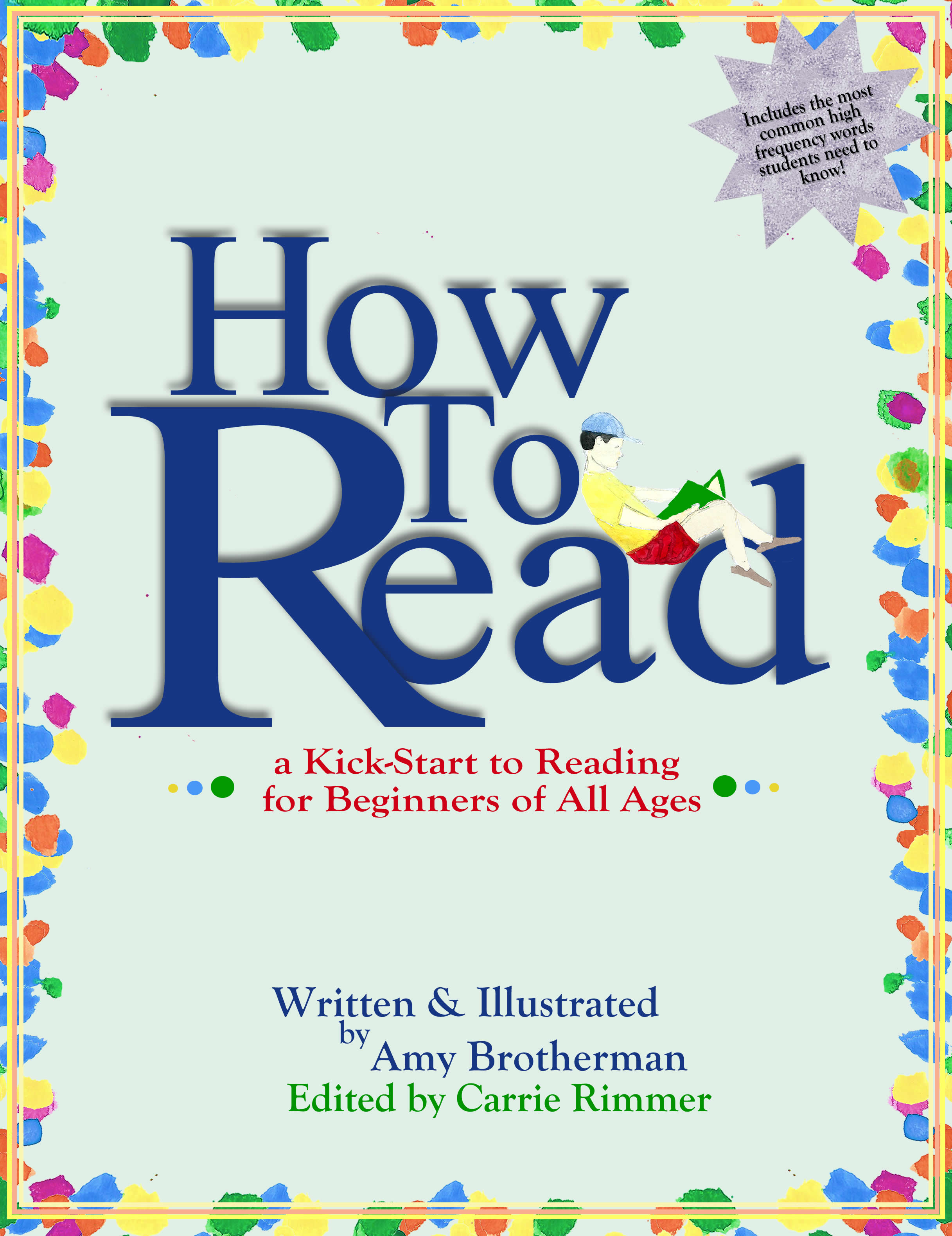
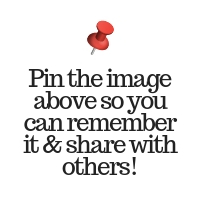
Links on this page are Amazon Affiliate links - if you purchase, I may make a teensy bit but at no cost to you! See Disclaimer here.
How to Read: a Kick-Start for Beginners of Any Age
An excellent "kick-start" for beginning readers to learn 125 first words taken from the Fry and Dolch word lists in 56 short daily lessons (about 5-10 minutes a day). With beautiful color illustrations and lauded for it's simplicity, How to Read nicely pairs phonics and sight word instruction into an old-made-new method for beginners of any age.



